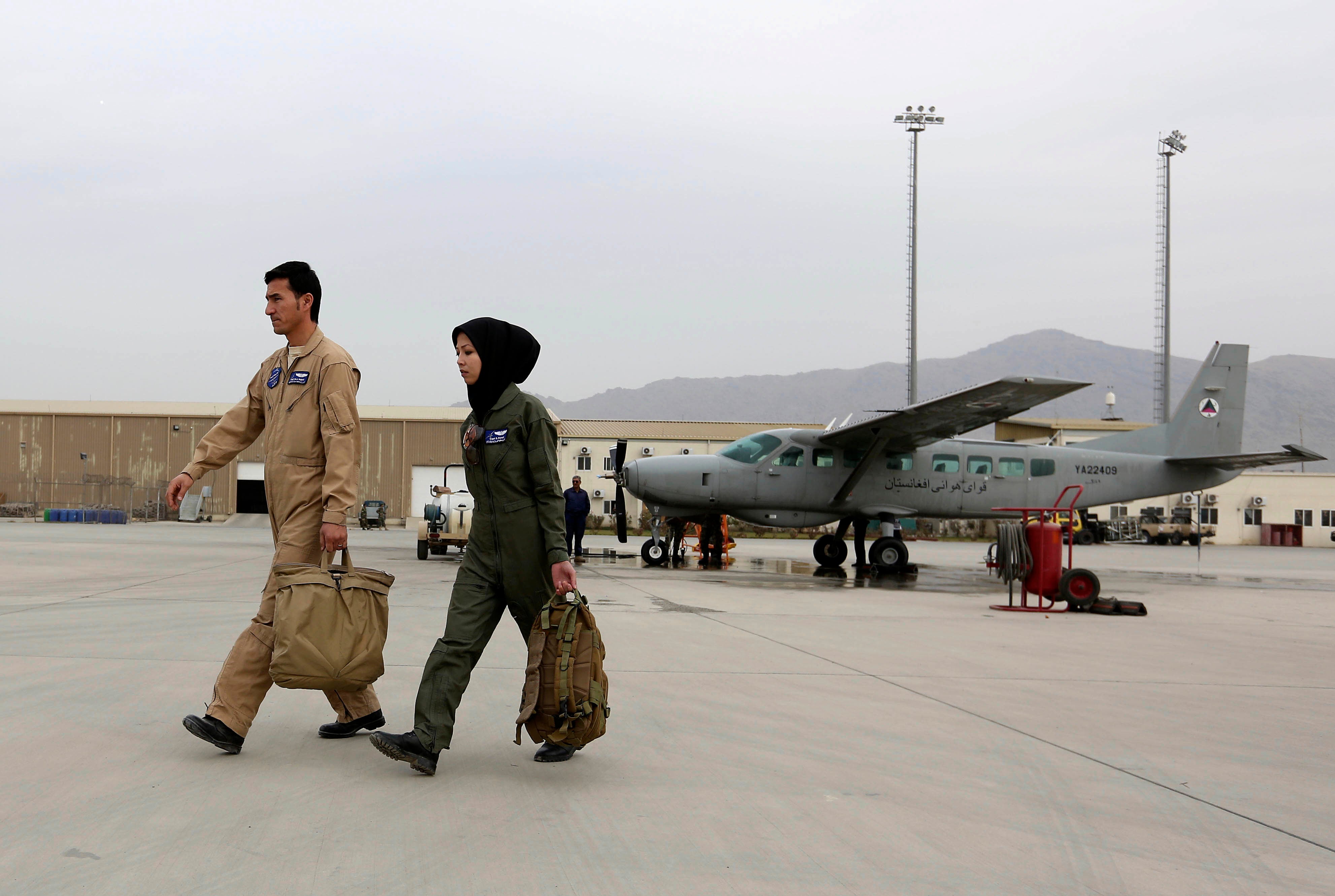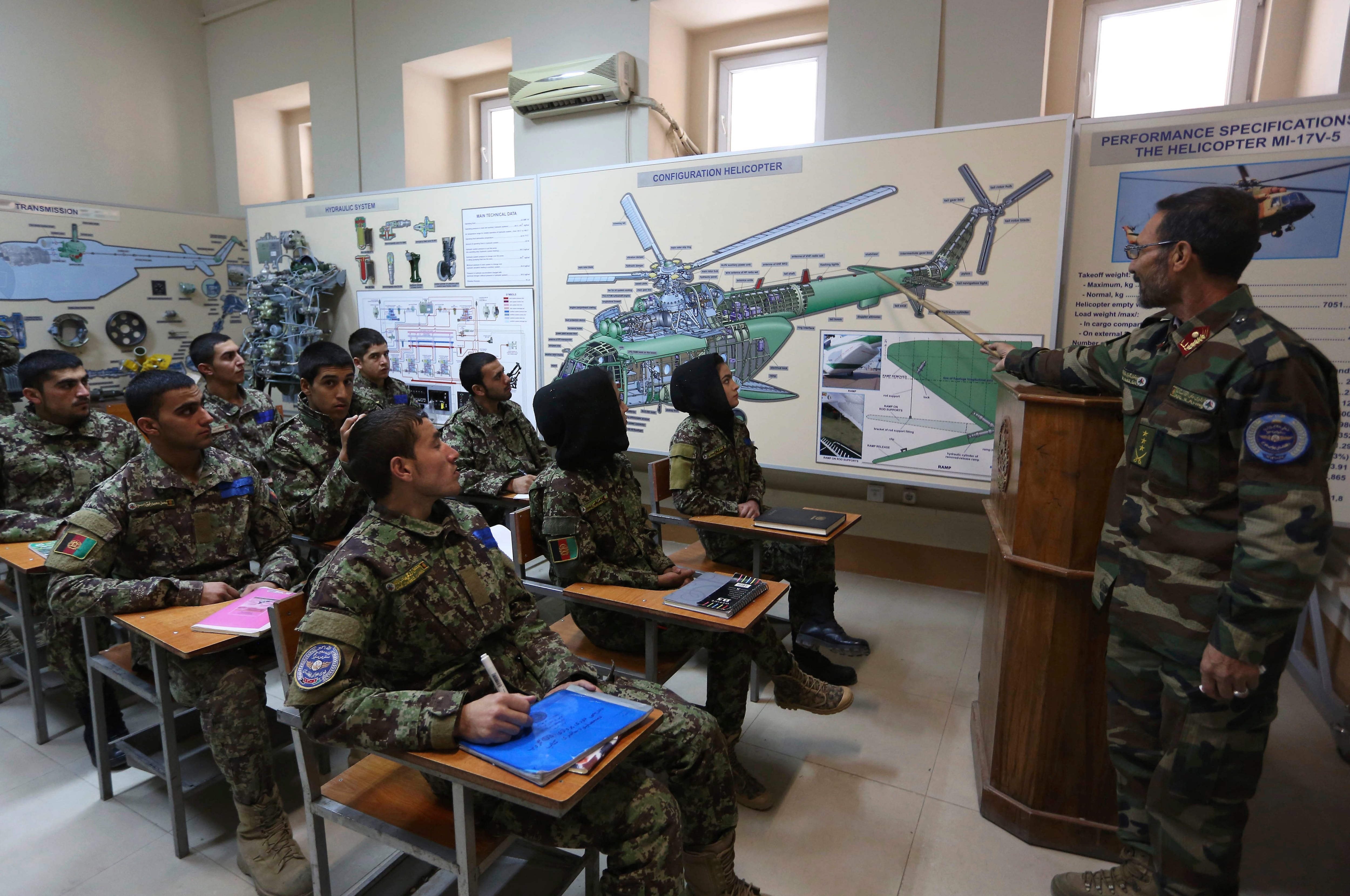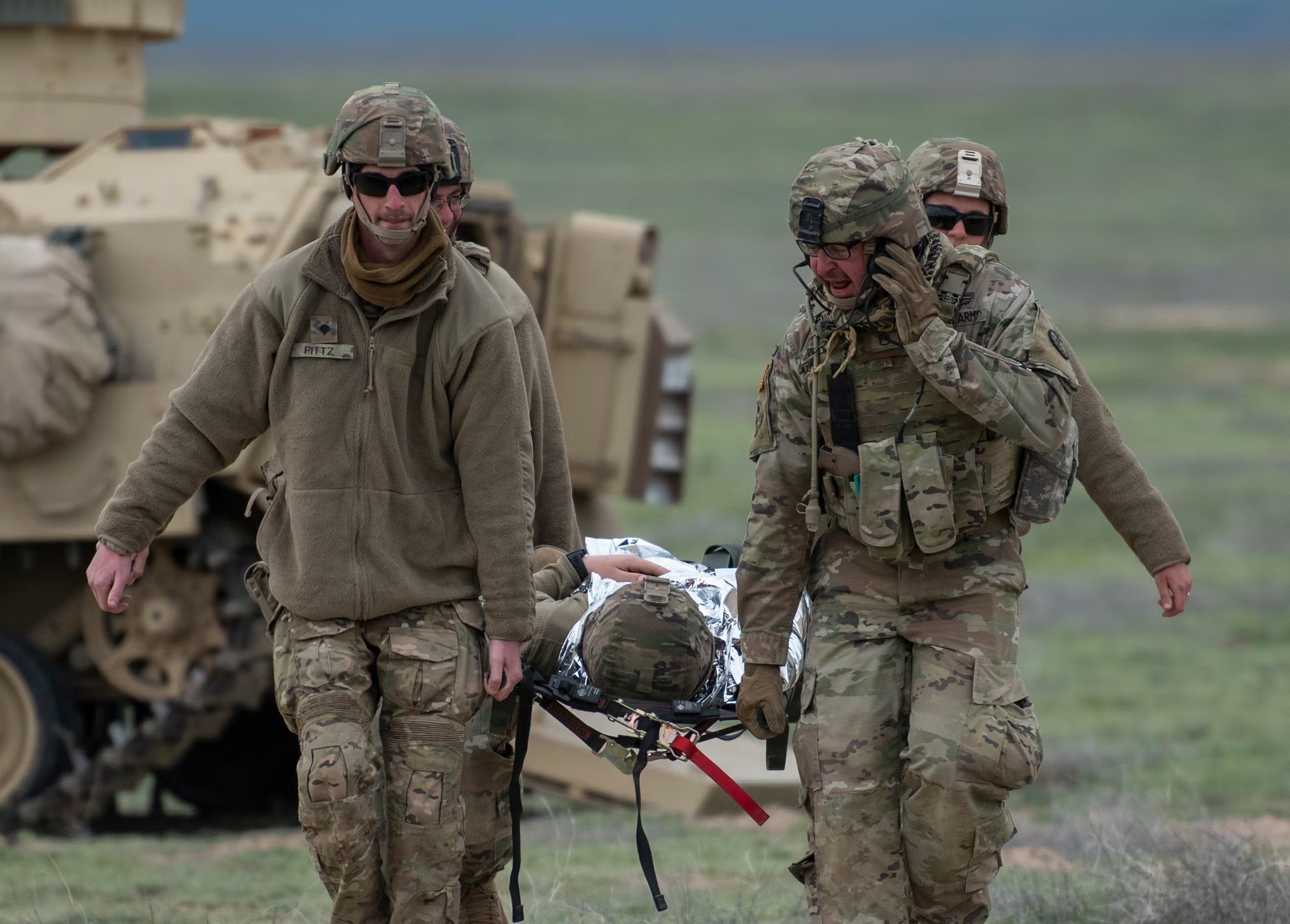KABUL, Afghanistan — From a childhood as a refugee, Capt. Safia Ferozi is now flying a transport plane for Afghanistan's air force as the country's second female pilot, a sign of the efforts to bring more women into the armed forces.
Along the way, the 26-year-old Ferozi also married another pilot, who flies in the same unit supporting army ground forces. They are part of a small Afghan air force that is trying to take a greater role in fighting the Taliban insurgency.
"When I wear a military uniform, I really, really feel proud of myself as a woman," Ferozi said while preparing for a flight at the air force base in the capital, Kabul. She flies a C-208, a turboprop plane used as transport for the armed forces.
Nearly 16 years since the collapse of the militant Taliban regime after the U.S.-led invasion in 2001, Afghan women are taking steps to increase their presence in society, including in parliament, government and the military. Still, they face resistance in a deeply conservative society where women are largely expected to stay in the home and where violence against women remains a widespread problem.
When she was a child, Ferozi's family fled from their home in Kabul in the 1990s, during the civil war among Afghanistan's warlords. They took refuge in Pakistan, returning only after the fall of the Taliban.
In high school in post-Taliban Afghanistan, Ferozi saw a TV commercial urging women to join the military. After graduation she enrolled in the military academy, studying to become a communication officer. Then it was announced at the academy that the air force was looking for women to become pilots.

Ferozi and her husband, Capt. Mohammad Jawad Najafi, 31, walk on the flightline at the Afghan military airbase in Kabul. They met while Ferozi was training to become a pilot.
Photo Credit: Rahmat Gul/AP
Ferozi and 12 other women applied, and she was the only one who passed the tests to enter training.
While she was training at an airfield in the western province of Herat, she met Capt. Mohammad Jawad Najafi, the pilot who would later become her husband. They married nearly two years ago, and he has since backed her ambitions.
She graduated from training in 2015. She gave birth to their first child, daughter Nergis, now nearly 8 months old, and is back flying missions.
Ferozi is one of only two female pilots in the Afghan air force, but five other women are going through training.
In 2013, Capt. Niloofar Rahmani became the country's first woman pilot in more than 30 years and the first to pilot fixed-wing aircraft — there were a few female helicopter pilots during Soviet-backed rule in the 1980s. She is in the United States training on the far larger C-130 military transport craft.
Ferozi says she hopes to inspire other women.

New Afghan air force pilots attend class at the air force university in Kabul. Afghanistan's small air force has attack helicopters and light attack planes that have been flying combat missions this year, though NATO militaries carry out the vast majority of strikes in the fight against insurgents.
Photo Credit: Rahmat Gul/AP
"As a woman you face many challenges, but you have to deal somehow with all those problems," she said.
There are around 1,800 women serving in Afghanistan's 195,000-member military, according to Gen. Mohammad Radmanish, deputy Defense Ministry spokesman. The military, which is heavily backed by the U.S. and NATO, is working to bring the number up to 10 percent of its ranks over the next seven years, he said.
Afghanistan's small air force — just over 100 aircraft — received little attention for years, but in 2015 NATO and the U.S. began focusing on building it up with increased training and equipment. The force has attack helicopters and light attack planes that have been flying combat missions this year, though NATO militaries carry out the vast majority of strikes in the fight against insurgents.
The other major role for the air force is in emergency humanitarian missions, helping those hit by flooding, avalanches, landslides or other disasters.





